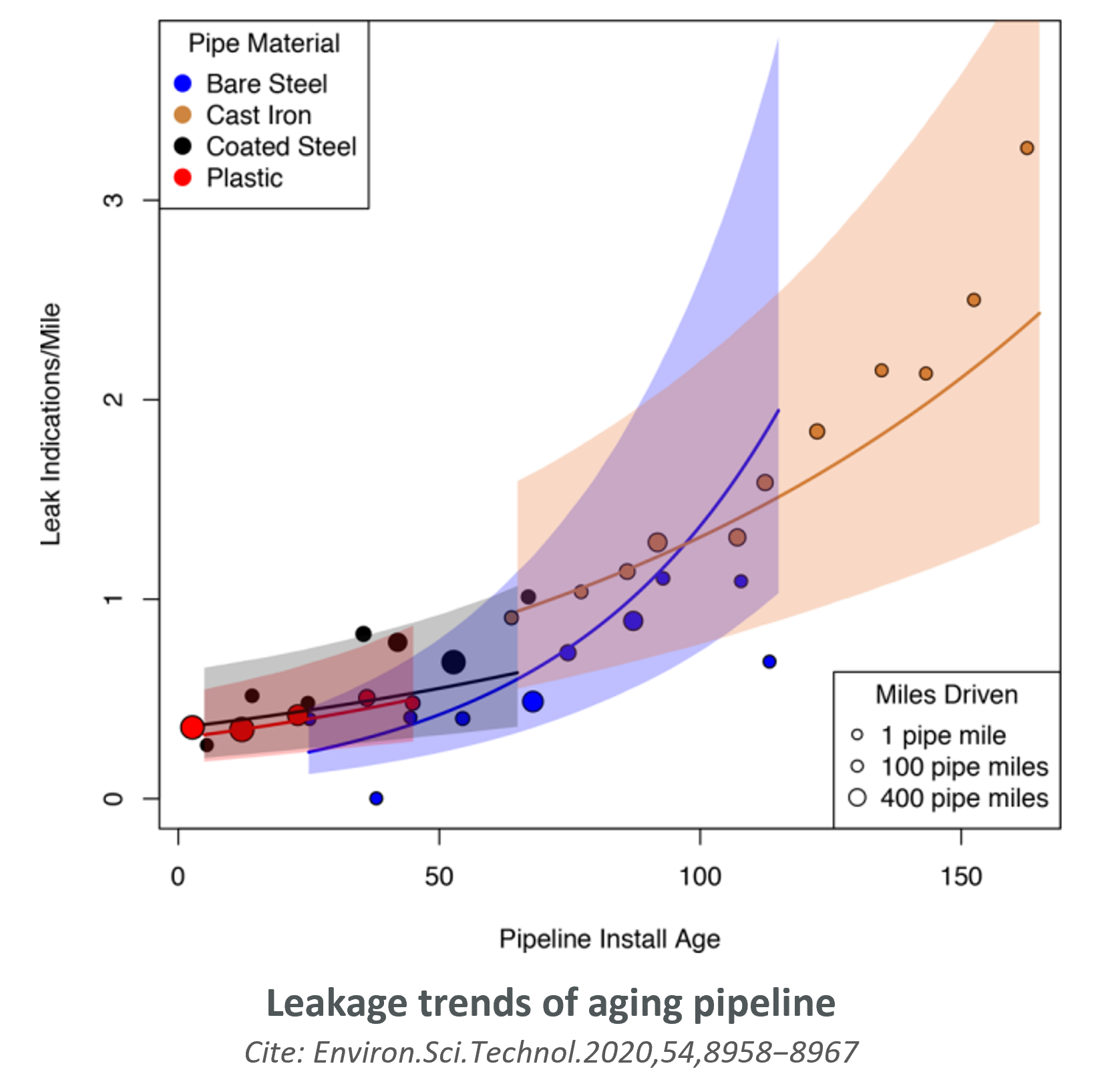Gas and electric distribution utilities own, operate, and maintain extensive infrastructure systems that are critical to meeting the everyday needs of the economy - homes, businesses, and industry – and to maintaining the lifeline services of hospitals, schools, nursing homes, and the electric generators that serve them.
As cooperative, public power, and investor-owned utilities work to maintain and improve the reliability, resilience, and integrity of their extensive distribution systems, they wrestle with key planning questions like how to make optimal investments to drive cost-effective service to customers, meet commission expectations, and sustain their business model.
The primary objective of utility infrastructure replacement programs is to replace and upgrade infrastructure at a pace that maintains or improves the reliability of the system (see figure below). To do this, processes are used to optimize and manage key constraints and to track progress against reliability and cost-effectiveness metrics.

Daymark recently completed a management audit that reviewed how Dominion Energy Ohio (DEO), a gas distribution utility in Ohio, is wrestling with planning questions in the context of its infrastructure replacement program. Our report supports a joint stipulation between the utility and its regulator and describes the process we undertook to audit DEO’s pipeline infrastructure replacement (PIR) program for the period from 2015 through 2021.[1]
Infrastructure replacement programs generally prioritize replacement of aging and failing utility infrastructure based on technical need and rules authorizing the recovery of those investments. Programs are primarily the responsibility of distribution management teams, though, as our recent review highlights, many major departments within the utility can be involved, including: marketing, engineering, construction, rates, regulatory affairs, IT, finance, and others. We hope learnings from our management audit review will inform the work of other utilities who are engaged in similar programs and who are interacting with their respective commissions and customers over their programs’ life cycles.
Maintaining distribution systems to provide reliable, cost-effective service
Gas distribution companies across the country are meeting safety and reliability expectations in a thorough and responsible manner and have been for many years. Federal and state regulatory agencies require compliance with extensive rules and practices to ensure safe and reliable operations and utilities are required to file safety management programs and other annual reports with state and federal commissions so that compliance and effectiveness can be reviewed. These programs are designed to, among other things, inform both utility operators and regulators where to focus attention and resources to meet the goals of infrastructure replacement programs.
Regulators typically review the costs of infrastructure replacement programs in annual reconciliation and safety management dockets. Ultimately, both capital and financing costs associated with additions to rate base are allocated to customer classes. In the case of investor-owned utilities, additions to rate base include commission-approved costs of equity as part of total allowed rates of return. For their part, utility commissions must evaluate these programs consistent with the existing regulations, any changes in legislation that provide for accelerated revenue recovery as assets are replaced, and ultimately within the context of future rate cases.
The rise of accelerated pipeline replacement programs dates to at least the early 2010s when some state legislatures passed rules that authorized recovery for the return of and on investment contemporaneous with new pipe placed into service. The advantage of this accelerated approach to pipeline integrity management is that a local distribution company can shorten the time needed for the review and approval of capital and financing costs. Benefits to customers include reducing the overall cost of capital to customers, distributing the cost to customers in more uniform way to avoid cost shocks, and incentivizing utilities to focus their resources toward continuously improving system integrity and reliability.
Long range perspective required
Infrastructure replacements and upgrades are time-sensitive and expensive and utilities must plan for them well in advance of knowing whether and how their costs will be recovered. Utilities must also engage with local governments and communities to coordinate work in advance of the first construction vehicle showing up to dig up a road. 
The figure at right, for example, illustrates higher leak indications per mile for older pipelines industry wide. It shows that, statistically, the leak rate for uncathodically protected steel is expected to increase with age, which underscores the imperative to remove or retire this pipe material as quickly as possible and highlights the importance of monitoring the system as described in gas utilities’ Distribution Integrity Management Plans (DIMP).
Program pace is key
Programs must make sure that infrastructure replacements and upgrades are made at a pace sufficient to prevent overall deterioration of the system. The complexity of these programs is multifold – they involve multiple teams, have long timelines, and need effective prioritization of reliability projects within the context of constraints around cost, labor, material, and permitting. While these challenges can vary by size and type of utility (electric, gas, cooperative, municipal, investor-owned), they apply to all reliability programs.
To monitor and optimize programs, periodic reviews are extremely important. Reviews can identify challenges, recommend metrics to track progress, identify areas for improvement in program management, and optimize program protocols across constraints. These periodic reviews can provide significant value in terms of optimizing costs, efficiency, and risk mitigation. A partner like Daymark can provide crucial value through such reviews by bringing program experts with experience in similar reliability programs, supported by our highly competent group of consultants and analysts.
If you’re looking for insight to support the success of your infrastructure replacement program, please reach out to Melissa, Aniruddha, and Sam by clicking below.
[1] A public version of our report is available on the Public Utilities Commission of Ohio (PUCO) website here as part of Case No. 20-1634-GA-ALT. Please note that this case remains open and active at this time, and the Commission Staff has not endorsed Daymark’s report.




